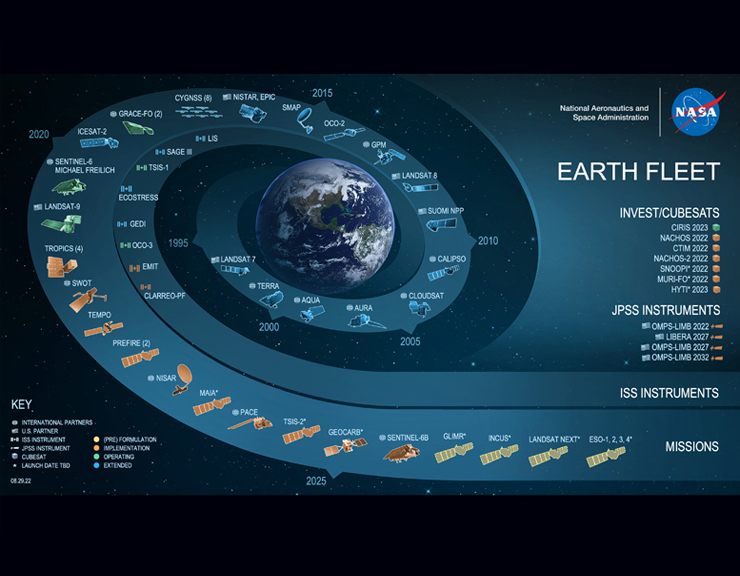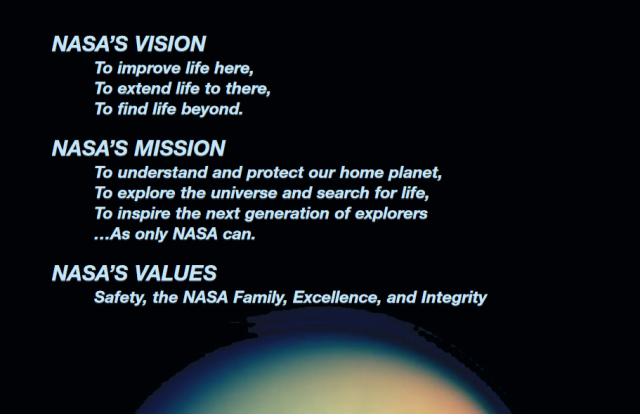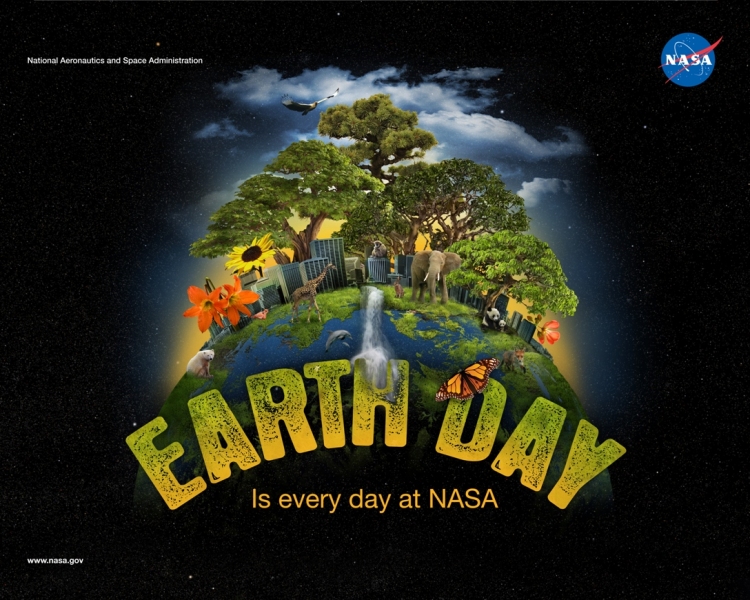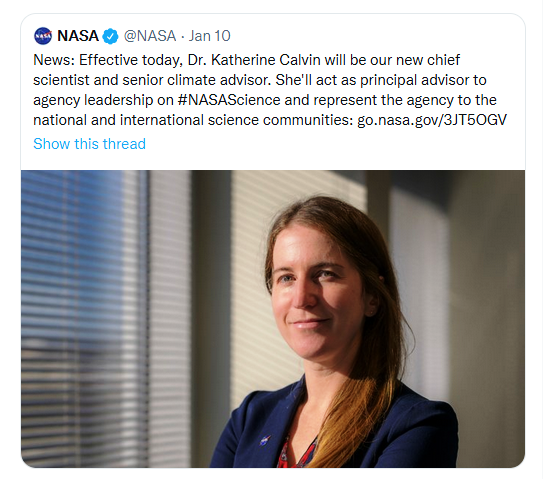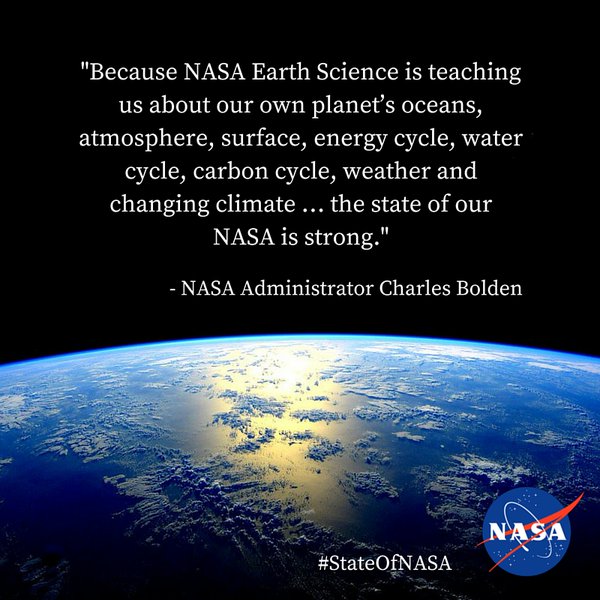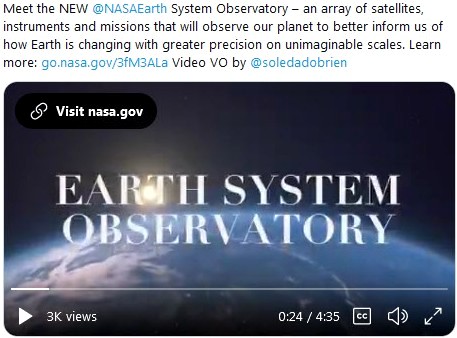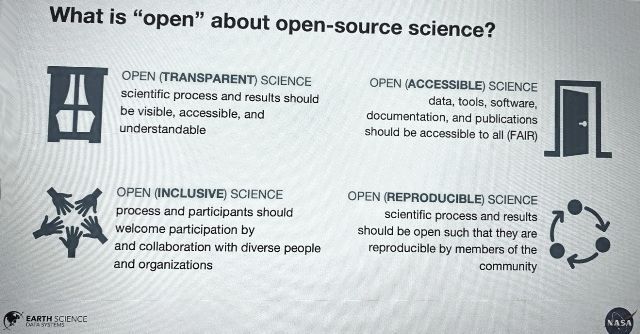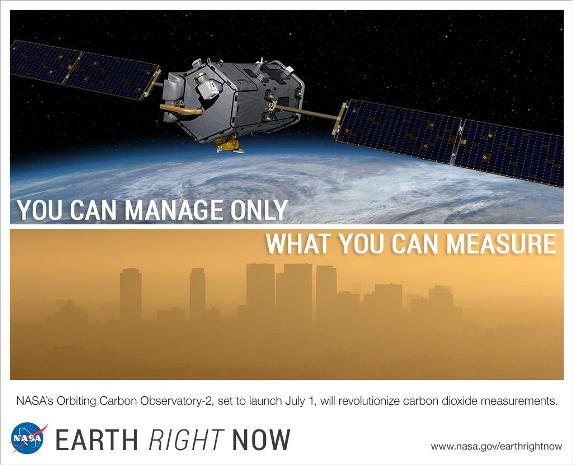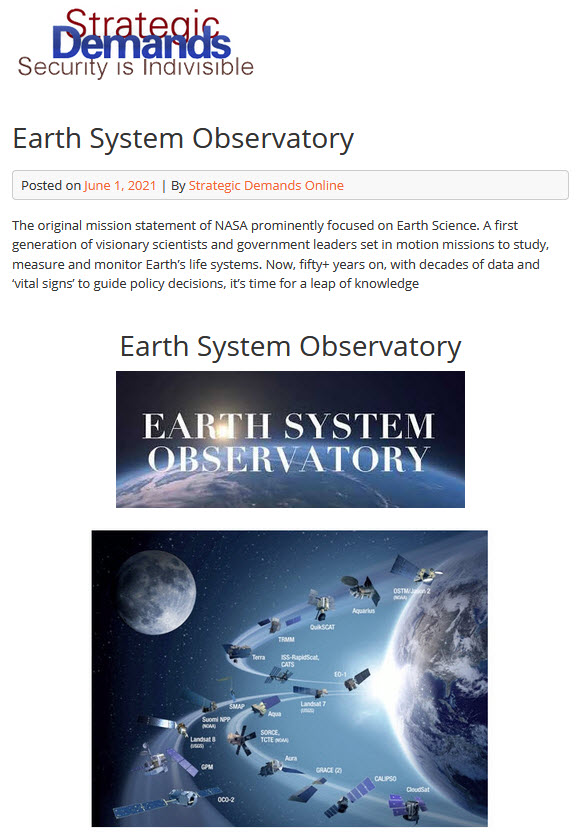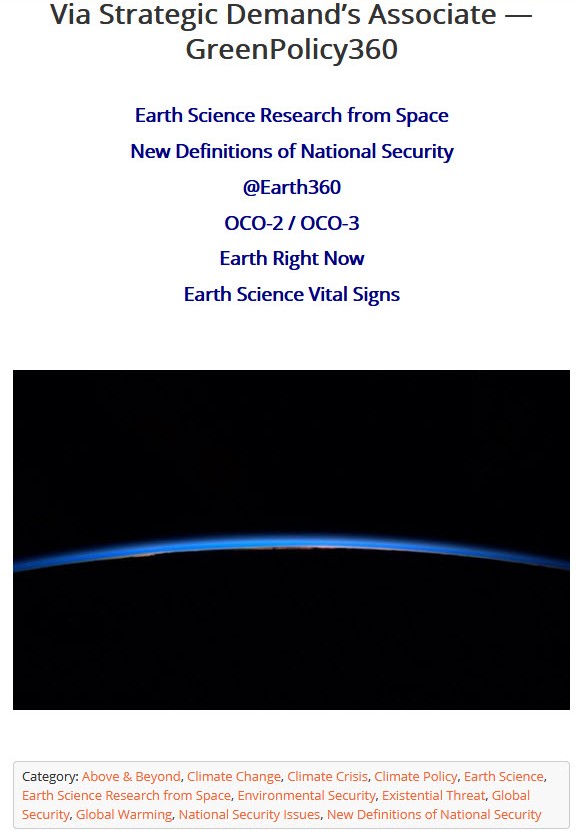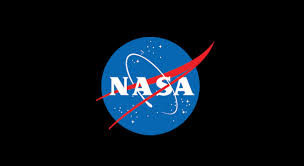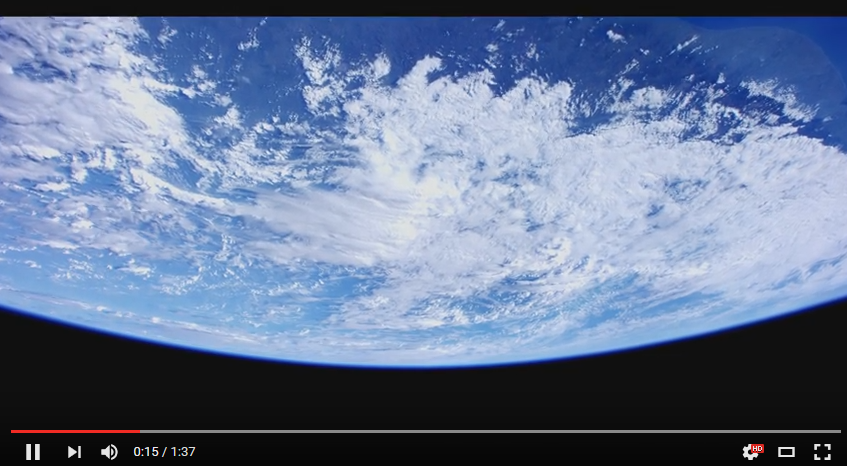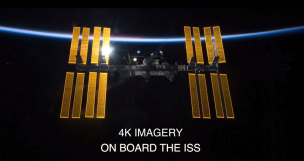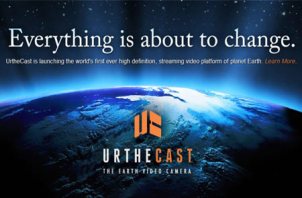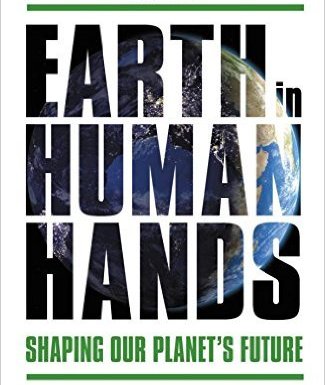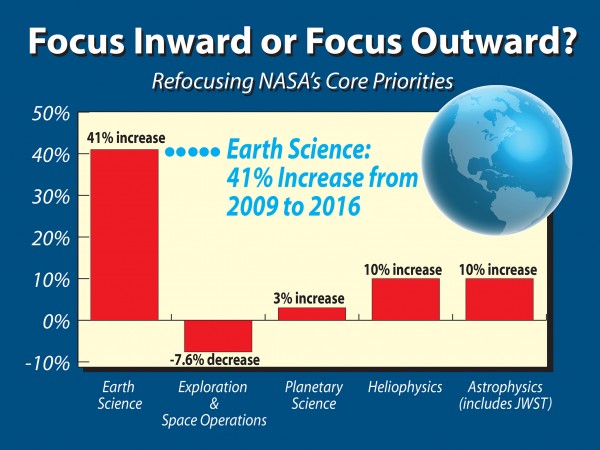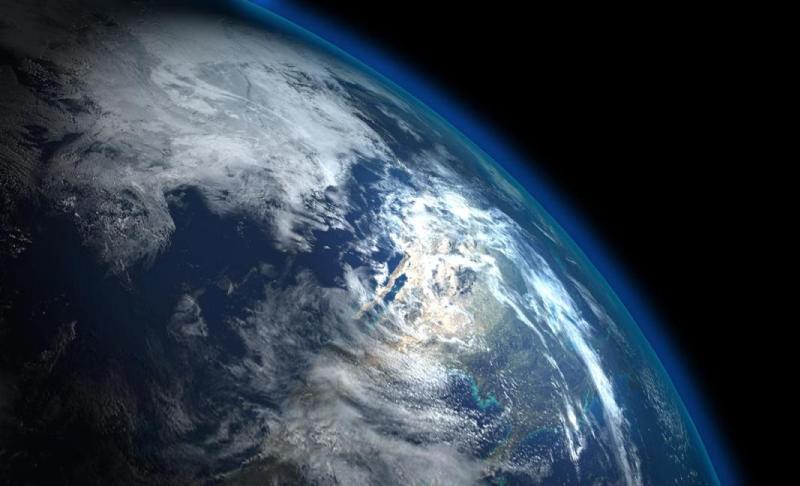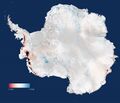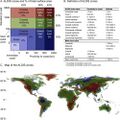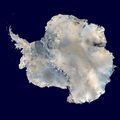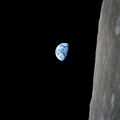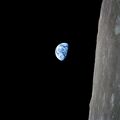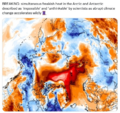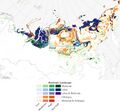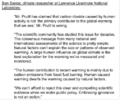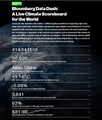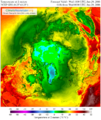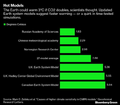Category:NASA
<addthis />
NASA Origins with a Planet Earth Mission
- “To understand and protect our home planet; to explore the universe and search for life; to inspire the next generation of explorers ... as only NASA can.”
In the National Aeronautics and Space Act, which established the agency in 1958, the first objective of the agency was listed as "the expansion of human knowledge of the earth and of phenomena in the atmosphere and space."
The Space Act has been amended many times since 1958 but these goals have been little changed. In NASA’s Authorization Act for 1985 the expansion of human knowledge “of the Earth” was added to goal.
🌎
The "EOS", an Earth Observing System, tracing its origins to the beginnings of Earth Science Research from Space
GreenPolicy360 looks at visionaries who set in motion first-of-its-type digital, multispectral imaging of Planet Earth
🌎
NASA's continuing vision and mission -- “To understand and protect our home planet"
GreenPolicy360: We are putting forward a proposal to restore the "understand and protect" Earth Science provision to the Mission Statement of NASA.
A number of years ago, Journalist Andrew Revkin wrote about the removal of this initial provision that was an essential part of the beginning of NASA as a government agency.
We believe that, although this language was 'silently' removed in 2006, the earth science mission continue to playing an essential role in the missions of NASA and NASA's work.
Here is what Andrew Revkin wrote some 15 years ago:
>Andrew Revkin/July 22, 2006/ NY Times
>“To understand and protect our home planet; to explore the universe and search for life; to inspire the next generation of explorers ... as only NASA can.”
>In February 2006, the phrase "to understand and protect the home planet" was quietly removed from the National Aeronautics and Space Administration (NASA)'s official mission statement.
>It is the first time since NASA’s founding in 1958 that the mission statement does not explicitly include mention of the Earth.
Here is part of NASA Administrator Bill Nelson's testimony before the Senate oversight committee in 2022:
INDEED A LOT OF PEOPLE THINK OF NASA AS THE SPACE AGENCY. DON'T FORGET TO THE FIRST A, AERONAUTICS. BUT ALSO, PEOPLE DON'T REALIZE IT IS ALSO THE POINT OF THE SPHERE ON CLIMATE AND CLIMATE CHANGE BECAUSE ALL THE MEASUREMENTS THAT ARE BEING MADE ARE DONE BY INSTRUMENTS THAT WE DESIGN, BUILD, LAUNCH AND MANY OF THEM WE OPERATE.
OVER THE COURSE OF THE NEXT DECADE WE ARE GOING TO HAVE A GREAT OBSERVATORY OF FIVE ADDITIONAL MAJOR SPACECRAFT THAT ALL OF THIS INFORMATION IS GOING TO BE PUT INTO A 3D COMPOSITE ON PRECISELY WHAT IS HAPPENING TO THE EARTH'S CLIMATE. WHAT'S HAPPENING TO THE WATER, TO THE LAND, TO THE ICE, TO THE ATMOSPHERE. WE ARE PUTTING UP AT THE END OF THIS YEAR A MISSION THAT IS GOING TO BE ABLE TO MEASURE FOR THE FIRST TIME THE ELEVATION OF THE STREAMS AND RIVERS AND LAKES, THE FRESHWATER. WE'VE BEEN ABLE TO MEASURE THE ELEVATION OF THE OCEANS, THE SALTWATER. WE ARE GOING TO BE ABLE TO FIND OUT VERY PRECISELY WHAT IS HAPPENING TO THE ICE.
ALL OF THIS AND WE HAVE THE SUPPORT OF THE WHITE HOUSE ON THIS AND WE HOPE WE WILL HAVE YOUR SUPPORT. WE ARE GOING TO CREATE IF YOU CAN ENVISION IN SPACE TERMS A MISSION CONTROL CENTER. IT'S GOING TO BE CALLED THE EARTH INFORMATION CENTER. IT'S GOING TO BRING ALL OF THIS DATA IN AND IT'S GOING TO BE DISPLAYED AND IT'S GOING TO BE AVAILABLE TO EVERYBODY, NOT JUST GOVERNMENT AT ALL LEVELS INCLUDING YOUR LOCAL COUNTY COMMISSION WHEN THEY ARE PLANNING, BUT IT'S GOING TO BE AVAILABLE TO SCHOOLS AND UNIVERSITIES AND THE PRIVATE SECTOR AS WELL AS TO WHAT IS HAPPENING AND THE CHANGES THAT ARE HAPPENING TO THE CLAIMANT.
SJS/Siterunner: Readers of GreenPolicy360 can look back at your GreenPolicy founder's work with George E. Brown, who was instrumental as a leader in Congress for over 30 years and led Earth Science efforts, including advancing NASA's first generation of earth research from space.
Congressman Brown's point of view for over 30 yrs in Congress was that technology, science, data are guides necessary for smart policy decisions. Check out his record. George set in motion many of the programs and missions to accomplish multi generational environmental protection goals that we have taken up and carried on...
The Original Mission Statement of NASA ((1958) provided Congressional intent and guidance to the first generation of space programs. George, if he were here, would've done everything within his power to protect the original mission statement, even as misinformation and denial are rampant these days ...
○ ○ ○ ○ ○ ○ ○ ○
January 2022
- ○ ○ ○ ○ ○ ○ ○ ○ ○ ○ ○ ○ ○ ○ ○ ○ ○ ○ ○ ○ ○ ○ ○ ○ ○ ○ ○ ○ ○ ○ ○
Earth Observation System / EOS
Essential in today's world and the intense need to address the #climatecrisis
Earth science, atmospheric science, measuring and monitoring, open source/access to the data ...
Our climate action agenda ... planet citizens making a positive difference
○ ○ ○ ○ ○ ○ ○ ○ ○ ○ ○ ○ ○ ○ ○ ○ ○
Earth Right Now (Daily via NASA)
• (TW) https://twitter.com/NASAClimate
• (TW) https://twitter.com/NASA
• (TW) https://twitter.com/NASAJPL
Earth Research from Space @ GreenPolicy online
2018 Update / New NASA Chief Says He Will Protect Climate Research
After his previous rejection of climate science, Jim Bridenstine tells employees he will keep politics out of the agency’s work
Visit NASA
In the National Aeronautics and Space Act, which established the agency in 1958
The first objective of the agency was listed as “the expansion of human knowledge of the earth and of phenomena in the atmosphere and space.”
○ ○ ○ ○ ○ ○ ○ ○ ○
Planet Earth
From its origins, NASA has studied our planet in novel ways, using ingenious tools to study physical processes at work—from beneath the crust to the edge of the atmosphere. We look at it in macrocosm and microcosm, from the flow of one mountain stream to the flow of jet streams. Most of all, we look at Earth as a system, examining the cycles and processes—the water cycle, the carbon cycle, ocean circulation, the movement of heat—that interact and influence each other in a complex, dynamic dance across seasons and decades.
For all of the dynamism and detail we can observe from orbit, sometimes it is worth stepping back and simply admiring Earth. It is a beautiful, awe-inspiring place, and it is the only world most of us will ever know.
Of all celestial bodies within reach or view, as far as we can see, out to the edge, the most wonderful and marvelous and mysterious is turning out to be our own planet earth. There is nothing to match it anywhere, not yet anyway. — Lewis Thomas
Sixty years ago, with the launch of Explorer 1, NASA made its first observations of Earth from space. Fifty years ago, astronauts left Earth orbit for the first time and looked back at our “blue marble.” All of these years later, as we send spacecraft and point our telescopes past the outer edges of the solar system, as we study our planetary neighbors and our Sun in exquisite detail, there remains much to see and explore at home.
We are still just getting to know Earth through the tools of science...
• https://www.nasa.gov/connect/ebooks/earth_detail.html
- › Kindle readers: MOBI [18.9 MB]
- › All other eBook readers: EPUB [25.4 MB]
- › PDF readers: PDF [35.4 MB]
Mission Planet Earth: NASA, Earth Science News
- Earth Science Research from Space
- Look at how thin our atmosphere is
- Earth and Space, Politics
- Climate News
- Earth Right Now
○ ○ ○ ○ ○ ○ ○ ○ ○ ○ ○ ○ ○ ○
NASA's universe of images, with special emphasis on the home planet
April 2017 / Now available for planet citizens online in one searchable place (via the Cloud w/ AWS)
○
What's Really Warming the World...
"What's Really Warming the World? Climate deniers blame natural factors; NASA data proves otherwise."
NASA-GISS presents interactive demonstrations of decades of scientific data and study...
○
Join NASA for a #24Seven Celebration of Earth Day
This Earth Day, April 22, 2016, NASA is giving the world an insider’s look into the myriad activities the space agency conducts in a typical day to study and protect our home planet.
And -- we’re asking the world to share your Earth Day with us.
On April 22, NASA will post about 200 images across nearly 100 different social media channels that capture the breadth of the agency’s 24-hour-a-day work to study Earth. The images were captured during the week of March 27, but have been assembled chronologically to tell a story of a “day in the life” of NASA’s Earth science work. The time-stamped posts -- hashtagged #24Seven -- will begin publishing at 12:01 a.m. EDT and will continue throughout the day.
We know we aren’t the only people working to safeguard and understand our home planet. As you celebrate Earth Day, we’re asking you to share on social media what you’re doing to mark the day and celebrate our fragile home in space.
* https://www.facebook.com/nasasolarsystem/videos/10153537798177918/
* https://www.facebook.com/nasasolarsystem/?pnref=story
* http://www.nasa.gov/content/goddard/2016/join-nasa-for-a-24seven-celebration-of-earth-day
Visit featured Earth Day 2016 Planet Citizen sites @GreenPolicy360
- Vision of Planet Citizens - https://www.greenpolicy360.net/w/Planet_Citizens
- Hello Earth - http://www.greenpolicy360.net/w/HelloEarth
- Earth POV - http://www.greenpolicy360.net/w/EarthPOV
○ ○ ○ ○ ○ ○ ○ ○ ○ ○ ○ ○ ○ ○ ○ ○ ○ ○
Game-Changing Energy Technology
NASA Research Could Save Commercial Airlines Billions in New Era of Aviation
New technologies, developed under the purview of NASA’s Environmentally Responsible Aviation (ERA) project, could cut airline fuel use in half, pollution by 75 percent and noise to nearly one-eighth of today’s levels.
“If these technologies start finding their way into the airline fleet, our computer models show the economic impact could amount to $255 billion in operational savings between 2025 and 2050,” said Jaiwon Shin, NASA’s associate administrator for aeronautics research.
○ ○ ○ ○ ○ ○ ○ ○ ○ ○ ○ ○ ○ ○
Life on the International Space Station
• https://youtu.be/ouv1Un1F36A
Reel 1 / A view of life in space is getting a boost with the introduction of 4K Ultra High-Definition (UHD) video, providing an unprecedented look at what it's like to live and work aboard the International Space Station. This important new capability will allow researchers to acquire high resolution—high frame rate video to provide new insight into the vast array of experiments taking place every day. Cameras will also bestow breathtaking views of planet Earth and space station activities for those still dreaming of making the trip to outer space.
○ ○ ○ ○ ○ ○ ○ ○ ○ ○ ○ ○ ○ ○ ○ ○ ○
Live HDTV from the International Space Station
• https://www.urthecast.com/live
Urthecast and NASA bring you live, high definition video from the ISS. Perched 250 miles (400 km) above Earth’s surface, four high-definition (HDEV) cameras capture live 24/7 video of our planet.
See storms swirl over the oceans, watch the sun rise and set 16 times a day, and experience our Blue Marble as a planet citizen watching the earth rotate and roll beneath the ISS.
○ ○ ○ ○ ○ ○ ○ ○ ○ ○ ○ ○ ○ ○ ○ ○ ○
Open Access / 2015
Your NASA open access database
- Open Access to Space Station Science Data and Use of the NASA Physical Sciences Informatics System - http://psi.nasa.gov/home.aspx
○ ○ ○ ○ ○ ○ ○ ○ ○ ○ ○ ○ ○ ○ ○ ○ ○
NASA Links/Online Resources
• http://www.nasa.gov/ — http://climate.nasa.gov/
• http://www.jpl.nasa.gov/ — https://twitter.com/NASAJPL
• http://science.nasa.gov/search/
• http://www.nasa.gov/subject/7782/earth-research-findings/
○
○
○
• https://twitter.com/hashtag/EarthRightNow?src=hash
• http://science.nasa.gov/earth-science/
• http://www.nasa.gov/topics/earth/index.html
○
○
Earth Science Research from Space
In the National Aeronautics and Space Act, which established the agency in 1958, the first objective of the agency was listed as “the expansion of human knowledge of the earth and of phenomena in the atmosphere and space.”
From 2002 until February 2006, NASA’s mission statement, prominently featured in its budget and planning documents, read: “To understand and protect our home planet; to explore the universe and search for life; to inspire the next generation of explorers ... as only NASA can.”
In early February, the statement was quietly altered, with the phrase “to understand and protect our home planet” deleted. In this year’s budget and planning documents, the agency’s mission is “to pioneer the future in space exploration, scientific discovery and aeronautics research.”
David E. Steitz, a spokesman for the National Aeronautics and Space Administration, said the aim was to square the statement with President Bush’s goal of pursuing human spaceflight to the Moon and Mars.
- http://www.nytimes.com/2006/07/22/science/22nasa.html by Andy Revkin
○ ○ ○ ○ ○ ○ ○ ○ ○ ○ ○ ○ ○
NASA-JPL
○ ○ ○ ○ ○ ○ ○ ○ ○ ○ ○
Note re: the Use of NASA images at GreenPolicy360
Fair use of NASA missions images come under NASA and U.S. law and regulations placing these images legally in the Public Domain.
Under United States copyright law, works created by the U.S. federal government or its agencies cannot be copyrighted. (This does not apply to works created by state or local governments.)
GreenPolicy360 make copious use of many NASA images, particularly regarding #EarthScience missions and our focus on the vital importance of #AtmosphericScience
Please visit our "Thin Blue" site in our GreenPolicy network at www.thinbluelayer.com
🌎
Any questions re: use of images can be directed to GreenPolicy360 at [email protected]
We Encourage non-commercial sharing of images/content/data presented at GreenPolicy360
Except where otherwise noted, content on this site is licensed under a Creative Commons Attribution 4.0 International license.
GreenPolicy360 requests that all sharing and/or use of our content is accompanied with attribution to GreenPolicy360.net
• https://creativecommons.org/licenses/by/4.0/
Subcategories
This category has the following 17 subcategories, out of 17 total.
A
E
N
O
P
S
T
U
W
Pages in category "NASA"
The following 108 pages are in this category, out of 108 total.
C
- Carbon Brief
- Climate Change - Global Warming Keyword-Terms
- Climate Change Denier Talking Points -- and Rebuttals
- Climate Change Summit Paris
- Climate Desk
- Climate Law Blog @Columbia Law School
- Climate migration
- Climate News
- Climate News Events Archive ... 1970 to Today
- Climate Plans Enforcement - Resources
- Climate Problems, Climate Solutions
- Creatively Green
E
- Each of us can make a positive difference
- Earth
- Earth and Space, Politics
- Earth Day Summit - April 22 2021
- Earth from NASA
- Earth Imaging-New Space
- Earth Right Now
- Earth Science
- Earth Science Eco-Fields
- Earth Science Research from Space
- EarthPOV
- Earthrise
- EarthTime
- Earthviews from Astronauts
- Ecolivia
- Environmental Protection Agency
- Environmental Rules Rolled Back
- ESA Living Planet Announcement - May 2022
- Ethics and Climate Change
- European Union Green Deal - Fit for 55
- Extinction
- ExxonMobil and US House Science Committee v US Attorneys General and Environmental Groups
G
- George E. Brown Jr
- Glasgow Climate Summit - Pledges, Promises, Declarations - What's Next Up
- Global Climate Action Summit
- Global Fishing Watch
- GN-z11
- GOES-16
- Google Earth
- GP360 NewPages
- Green Best Practices
- Green Quotes
- Green Stories of the Day
- Green Stories of the Day - GreenPolicy360 Archive
- Greening Our Blue Planet
- GreenPolicy360 Archive Highlights 2013
- GreenPolicy360 Archive Highlights 2014
- GreenPolicy360 Archive Highlights 2015
- GreenPolicy360 Archive Highlights 2016
- GreenPolicy360 Archive Highlights 2017
- GreenPolicy360 Archive Highlights 2018
- GreenPolicy360 Archive Highlights 2019
- GreenPolicy360 Archive Highlights 2020
- GreenPolicy360 Archive Highlights 2023
- GreenPolicy360 Highlights
L
P
S
T
Media in category "NASA"
The following 200 files are in this category, out of 1,002 total.
(previous page) (next page)- 'Most beautiful from space' the Bahamas by Scott Kelly Apr 26, 2015.png 800 × 511; 767 KB
- 'Thin Blue Layer' of Earth's Atmosphere 2.jpg 800 × 486; 46 KB
- 'Thin Blue Layer' of Earth's Atmosphere l.jpg 853 × 486; 46 KB
- 'Thin Blue Layer' of Earth's Atmosphere m.jpg 426 × 240; 15 KB
- 'Thin Blue Layer' of Earth's Atmosphere xl.jpg 1,152 × 648; 79 KB
- -Earth360 Perseid ISS AstroGaran.jpg 960 × 639; 0 bytes
- -HelloEarth.png 579 × 381; 0 bytes
- 03-Scott-Kelly-NASA.jpg 800 × 500; 113 KB
- 1.2-million-galaxies-cross-section-e1468508533423.png 800 × 372; 435 KB
- 1.2-million-galaxies-map-slice.jpg 800 × 600; 326 KB
- 2014-06-10 Steve swanson w red romaine grown on the ISS.jpg 1,024 × 566; 142 KB
- 2015 Hottest year a.pdf ; 316 KB
- 2015 Hottest year b.pdf ; 308 KB
- 2020 record temperatures.png 800 × 502; 358 KB
- 29 Days on the Edge w James Webb.png 527 × 461; 215 KB
- 3-15-2016 10-49-38 AM.png 702 × 862; 396 KB
- 3-15-2016 12-29-07 PM.png 538 × 701; 201 KB
- 3840 × 2160.jpg 3,840 × 2,160; 1.11 MB
- 5 19 14 andrew antarcticaelevationchanges-640x547.jpg 640 × 547; 59 KB
- 7-20-2020 GreenPolicy360 RT No.2.jpg 591 × 510; 125 KB
- 92493695 2846246678763162 7097792584625422336 o.jpg 1,041 × 590; 70 KB
- @AstroSamantha HelloEarth Jan30,2015.png 998 × 699; 851 KB
- A Flash of Green by John D. MacDonald.jpg 400 × 400; 55 KB
- A Planet Citizen View.png 799 × 1,241; 1.64 MB
- A scorching year, what about the 360 warming data.jpg 600 × 706; 106 KB
- A View of the Earth and Moon from Mars.jpg 720 × 890; 3 KB
- About Baselines and Change.png 592 × 312; 33 KB
- About website of The Invading Sea.png 800 × 343; 126 KB
- Above Florida green.jpg 1,091 × 726; 171 KB
- Above.png 500 × 375; 173 KB
- Acceptance on behalf of the United States of America.png 448 × 306; 62 KB
- Act now for a livable future.png 501 × 275; 272 KB
- Acting to make a positive difference - in St Petersburg Florida.png 600 × 723; 645 KB
- Actually watching the planet breathe.png 800 × 446; 649 KB
- Ag production and GHG emissions.jpg 680 × 510; 33 KB
- Against the Tide - Cover - by Cornelia Dean.jpg 308 × 475; 57 KB
- Air pollution moves globally.png 620 × 412; 256 KB
- Alaska Willow - March 12 2023.png 576 × 230; 99 KB
- Alaska Willow News-March 12 2023.png 576 × 625; 235 KB
- Aldis zone blog.jpg 500 × 498; 67 KB
- Amazon fires burn across the rainforest.jpg 800 × 504; 76 KB
- Andrew Wheeler confirmed to head EPA.jpg 753 × 600; 85 KB
- Another year, another record.png 800 × 294; 251 KB
- Antarctica from Blue Marble wiki.jpg 768 × 768; 133 KB
- Antarctica NASA 1024x768.jpg 1,024 × 768; 250 KB
- Antarctica-2016 nasa.jpg 1,600 × 900; 174 KB
- Antarctica-2018.jpg 768 × 1,024; 82 KB
- Anti science, anti open data - EPA April 2017.png 429 × 616; 198 KB
- AOC re climate task force - july 8 2020.jpg 585 × 203; 38 KB
- Apollo 11 - 21 July 1969.jpg 750 × 395; 45 KB
- Apollo 11 returning to home planet Earth.jpg 791 × 960; 84 KB
- Apollo 4 view of Earth.jpg 1,200 × 1,200; 42 KB
- Apollo 8, Life Jan10,1969.png 480 × 635; 515 KB
- Apollo Earth 350x350.jpg 350 × 350; 32 KB
- Apollo programme for clean energy .png 617 × 357; 85 KB
- Apollo.jpg 715 × 715; 102 KB
- Arctic - Antarctic - Breaking.png 639 × 600; 903 KB
- Arctic - Kolbert - 2023.png 553 × 476; 274 KB
- Arctic 30.1 C at 62.5 N.jpg 800 × 432; 80 KB
- Arctic drilling ban Dec 21, 2016.png 692 × 536; 119 KB
- Arctic heat in Russia-Siberia 2020.gif 784 × 408; 3.6 MB
- Arctic mdl 1990-2010.jpg 720 × 667; 149 KB
- Arctic Melt - 1950-2020.png 640 × 349; 287 KB
- Arctic Sea Ice Area graphic thru 2016.png 640 × 355; 382 KB
- Arctic Sea Ice Feb 2018 NASA.jpg 640 × 360; 65 KB
- Arctic Sea Ice News.png 800 × 439; 458 KB
- Arctic Siberia Heatwave - Again - June 2021.jpg 640 × 360; 83 KB
- Arctic-asia mdl 1990-2010.jpg 720 × 667; 158 KB
- Arctic-March30,2019.jpg 797 × 600; 126 KB
- Arctic-Siberia-6-20-2020.jpg 478 × 644; 148 KB
- Arctic-swipa-spm.pdf ; 4.58 MB
- ArsTechnica February 2018 - Trump attempts to kill OCO-2.jpg 800 × 141; 33 KB
- As Earth Warms, NASA Targets 'Other Half' of Carbon, Climate Equation.jpg 1,504 × 846; 242 KB
- Astro Sam w new espresso machine's first cuppa java May2015.png 585 × 377; 375 KB
- Astro Samantha.png 448 × 266; 78 KB
- Astro Tracy.png 605 × 368; 0 bytes
- AstroGerst waving to us from the ISS.jpg 1,200 × 799; 105 KB
- Astronaut Photography of Earth ISS Cupola 2014.png 1,598 × 628; 1.13 MB
- Atmosphere Science.jpg 800 × 600; 45 KB
- Atmospheric Experiment of Humanity.jpg 519 × 574; 201 KB
- Aurora Time.png 829 × 780; 544 KB
- Bahama blues.jpg 1,600 × 1,065; 179 KB
- Banking - finance - climate - Mann-1.jpg 452 × 640; 162 KB
- Banking - finance - climate - Mann-2.jpg 452 × 640; 164 KB
- Barrier island hubris 6-29-2021.jpg 490 × 635; 111 KB
- Battle for Democracy.jpg 640 × 123; 24 KB
- Ben Santer to Pruitt March 2017.png 506 × 420; 0 bytes
- Berkeley Earth Sciences-NASA Data Sets Mission Feb2017.jpg 582 × 437; 73 KB
- Bernie Sanders, Senate 2.PNG 800 × 517; 379 KB
- Bernie Sanders, Senate Aug 3.PNG 800 × 518; 388 KB
- Biden - clean energy ambitions.JPG 640 × 334; 31 KB
- Biden introduces leadership team - Nov 24 2020.jpg 800 × 644; 173 KB
- Biden selects Kerry as special climate envoy.jpg 592 × 505; 87 KB
- Biden urged to act - Oct 18 2021 - The Guardian.png 663 × 600; 497 KB
- Biden's assembled an all-star climate team 4-21-2021.jpg 682 × 732; 309 KB
- Biden-January 27 2021-Environment Day 1-News headlines.jpg 800 × 673; 122 KB
- Biden-January 27 2021-Environment Day 1.jpg 800 × 500; 80 KB
- Biden-Sanders Unity Task Force on Climate.jpg 701 × 780; 139 KB
- Big Oil Rocked by News May 27 2021.jpg 639 × 600; 84 KB
- Bill Nelson on Global Temp Rise and Climate Change.png 640 × 353; 100 KB
- Bill Nye explains.jpg 543 × 508; 88 KB
- Bill Nye The Planet's on Fire.jpg 800 × 675; 106 KB
- Bloomberg Carbon Clock 10-26-2021 8-47-05 AM EST.png 800 × 195; 356 KB
- Bloomberg Live Climate Data Dashboard.jpg 640 × 756; 156 KB
- Blue Horizon Sept21,2015 by Astro Scott Kelly.jpg 1,023 × 681; 11 KB
- Blue Marble photo - Apollo 17.jpg 642 × 605; 129 KB
- Blue Marble photo taken by the crew of Apollo 17 (1972).jpg 642 × 605; 129 KB
- Blue-green phyto swirling 2015.png 357 × 605; 409 KB
- Bluemarble 2014-M.jpg 800 × 600; 107 KB
- Bluemarble 2014.jpg 2,400 × 1,800; 511 KB
- Brazil INDC 2015.png 592 × 366; 301 KB
- Breakpoint - Reckoning with America's Environmental Crisis.jpg 329 × 500; 49 KB
- Bridenstine talks.png 1,485 × 911; 223 KB
- Bridenstine-swear-in.jpg 640 × 420; 55 KB
- Brief History of Carbon Emissions as of 2016.png 770 × 425; 342 KB
- Bruce Dern memorial garden.png 580 × 501; 407 KB
- Burning the Data.png 640 × 597; 434 KB
- Burst of climate denial as Trump presidency ends.jpg 632 × 604; 92 KB
- CAIT Map 1.png 800 × 415; 123 KB
- California's kelp forests and coastal biodiversity diminished.png 532 × 754; 307 KB
- Canary - 1.jpg 448 × 901; 144 KB
- Canary - 2.png 446 × 531; 264 KB
- Car heating and cooling.png 465 × 635; 261 KB
- Carbon Brief - Greenhouse gas levels 2021.png 640 × 436; 292 KB
- Carbon Clock March 23, 2017.png 800 × 194; 44 KB
- Carbon Footprint - BP-McKibben-Solnit-Aug2021.jpg 516 × 264; 66 KB
- Carbon Mapper - Launch - April 2021.jpg 800 × 323; 92 KB
- Carbon-footprint small or large.jpg 149 × 258; 0 bytes
- Carbon-footprint.jpg 297 × 516; 59 KB
- Carl Sagan, 1985.PNG 480 × 566; 331 KB
- CCI-June29,2016.png 760 × 902; 201 KB
- Celebrating 50 Years of Landsat.png 600 × 610; 909 KB
- CFCs then HFCs.png 800 × 382; 169 KB
- CFSV2 world temp July 3, 2023.png 600 × 800; 513 KB
- CH4 graph - 1980-2020.JPG 640 × 446; 22 KB
- Changes in carbon dioxide per 1000 years - via Climate Central.jpg 682 × 424; 34 KB
- Charles Bolden.jpg 575 × 449; 153 KB
- China air 2005 2014.jpg 720 × 480; 160 KB
- China Record Heat - August 2022.png 800 × 1,343; 812 KB
- Chris and the Space Tortilla folded.jpg 636 × 203; 30 KB
- Chris and the Tortilla prep.jpg 634 × 355; 37 KB
- Christina Korp Earth Day and Apollo 8.jpg 519 × 264; 80 KB
- Citizens Climate Lobby - Save Our Future Act 2021.jpg 518 × 262; 77 KB
- Citizens Climate Lobby - Tampa Bay.jpg 586 × 515; 125 KB
- Climate -EarthScience Challenge m.jpg 558 × 167; 0 bytes
- Climate Action 25th conf in Madrid.jpg 680 × 510; 22 KB
- Climate activist - Steven Schmidt - 1978 on.png 600 × 480; 174 KB
- Climate and National Security.jpg 603 × 533; 157 KB
- Climate Books - 2020.jpg 800 × 450; 69 KB
- Climate cases on the rise - Nature, Sept 2021.png 800 × 562; 181 KB
- Climate Change Agr Nov 4, 2016.png 800 × 523; 296 KB
- Climate Change Conf Nov 6-17.png 464 × 488; 107 KB
- Climate Change COP27 - Nov 11 2022 US Representatives.jpg 712 × 444; 54 KB
- Climate Change COP27 - Nov 11 Kathy Castor.jpg 712 × 710; 77 KB
- Climate Change from Space - Climate Kit via ESA - 2022.png 800 × 421; 651 KB
- Climate Change Laws - database collaboration.png 640 × 271; 76 KB
- Climate Change Laws of the World - database.PNG 768 × 845; 383 KB
- Climate Change Litigation Databases Climate Law.png 800 × 330; 73 KB
- Climate Change Poses a Widening Threat to National Security.png 600 × 781; 310 KB
- Climate change unique threat to national security.png 800 × 42; 20 KB
- Climate Change US EPA.jpg 600 × 703; 95 KB
- Climate Conferences 1979-2020.jpg 768 × 768; 121 KB
- Climate Crisis - Emily Atkin Heated No. 1.jpg 537 × 453; 61 KB
- Climate Crisis and the Global Green New Deal.jpg 293 × 418; 33 KB
- Climate debate.jpg 493 × 580; 129 KB
- Climate Desk.jpg 390 × 226; 21 KB
- Climate diplomacy is failing - June 2020.jpg 592 × 440; 71 KB
- Climate Emergency Institute - Oct 2022.png 610 × 600; 274 KB
- Climate Emergency Institute -- 2021.jpg 800 × 450; 55 KB
- Climate emergency.jpg 800 × 450; 69 KB
- Climate Goals off course - 2018.png 800 × 556; 214 KB
- Climate Headline News around the World - July 2023.jpg 600 × 704; 151 KB
- Climate Lawsuit-Our Childrens Trust-Florida.png 462 × 760; 289 KB
- Climate Models.png 639 × 558; 123 KB
- Climate News - Oct 28 2022.jpg 626 × 600; 88 KB
- Climate News - United Nations Report - Feb 2022.png 768 × 878; 539 KB
- Climate News Dec 4 2023 in Dubai.png 800 × 1,037; 649 KB
- Climate Plan pledges as Oct6,2015.png 529 × 409; 101 KB
- Climate Plans Enforcement - Resources - GreenPolicy.png 768 × 897; 686 KB
- Climate poll - Florida.png 640 × 267; 36 KB
- Climate Science Special Report - US - November 2017.jpg 800 × 445; 122 KB
- Climate strike - Week 171.png 739 × 600; 834 KB
- Climate Strike Around the World - Sep20,2019.jpg 700 × 830; 119 KB
- Climate Summit - Leonardo DiCaprio.png 600 × 663; 521 KB
- Climate Summit live updates - Nov 2 2021.png 751 × 600; 420 KB
- Climate Summit planned-1.jpg 800 × 301; 53 KB
- Climate Summit planned-2.jpg 800 × 187; 31 KB
- Climate Summit planned-3.jpg 800 × 278; 44 KB
- Climate Summit planned-4.jpg 800 × 241; 41 KB
- Climate Time Machine NASA Earth Science.png 981 × 571; 378 KB
- Climate usa 60 years on.jpg 800 × 480; 34 KB
- Climate365 NASA and science orgs measure and monitor.png 798 × 633; 165 KB
- ClimateNews 360.jpg 172 × 172; 9 KB
- ClimateNewsFlorida.jpg 448 × 191; 36 KB


